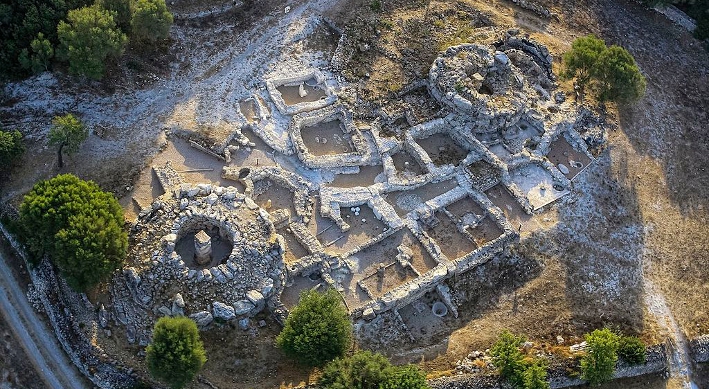Son Fornés Archaeological Site

Son Fornés is one of the most important prehistoric archaeological sites in the Balearic Islands. Located in the town of Montuïri in Mallorca, it dates from the Talaiotic Period through to the Classical-Roman Period. Early Medieval and Andalusian remains have also been documented, but are not part of the constructed site.
The excavations at the Son Fornés Archaeological Site began in 1975, under the direction of Vicenç Lull Santiago. From then until now, there have been 15 field campaigns, all under the scientific direction of the Universitat Autònoma de Barcelona, currently under the same Vicenç Lull, as well as Rafael Micó, Cristina Rihuete and Roberto Risch.
The purpose of the first excavations was to document the human occupation of Son Fornés over time and relate it to the history of the Balearic Islands. The result of fieldwork and subsequent research has made it possible to document the different societies that settled in and frequented Son Fornés over almost 2000 years.
The first settlement occurred in the Talaiotic Period (10th-6th century BCE). There are three talayots from this historic era, one of which is the largest in Mallorca, and a district of houses attached to a wall that joins two of them.
This first settlement was destroyed and rebuilt at the beginning the Post-Talaiotic Period (6th-3rd centuries BCE), an era characterised by the rise of the foners (slingers) and their involvement in support of the Carthaginians in the wars between the Greek cities in the south of the Italian Peninsula and Sicily.
During this restructuring process, the first Mediterranean style house was built, with a central courtyard surrounded by a series of rooms. Examples of these houses can be found attached to the talayots and outside the built-up area in the Talaiotic Period.
The end of this historical era gave way to a number of changes that led to a major conversion of the site. This was the beginning of the Classical Period (3rd century BCE-1st century CE), en era of transformations and of full integration of the Balearic populations in the dynamics of the Mediterranean states, first under Punic influence and later with the integration of the archipelago into Roman governance.
During this time of change, two sanctuaries were built in the middle of a working district. This set of buildings was built between the two abandoned talayots, and was surrounded by a series of streets with drainage systems that emphasise their centrality.
Midway through the first century CE, the settlement was gradually abandoned and sporadically frequented in the Byzantine and Andalusian periods.